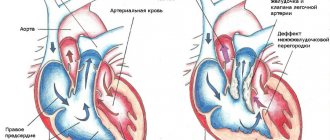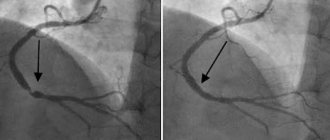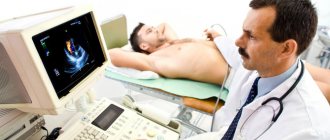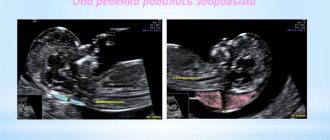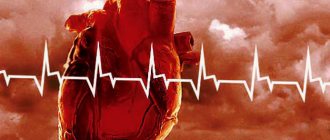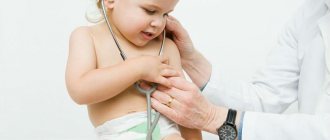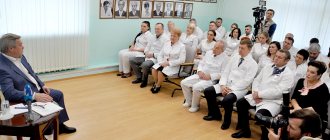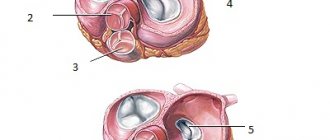Diet for cardiac patients
1.FATS: Recommended: Limit intake of all fats.
Limited intake: Butter and margarine containing polyunsaturated fatty acids in large quantities (in Russia, “Zdorovye” margarine). Oil: sunflower, corn, saffron, soybean, olive, cottonseed.
Not recommended : Oil and fat obtained during frying meat and meat products, lard, coconut oil. Margarines without a high unsaturated fat content label. Melted or vegetable oil of unknown origin. Hydrogenated oils and margarines.
2. MEAT: Recommended: Chicken, turkey, veal, rabbit, game (wild ducks, partridges, hare)
Limited intake: Lean beef, bacon, ham, lean ground beef, liver and kidney.
Not recommended : Meat with visible fat, lamb brisket and ribs, pork (meat from the belly area), bacon with layers of fat, sausages, sausages, salami, pate, scrambled eggs with meat, duck, goose, meat pastes, poultry skin.
3. DAIRY PRODUCTS : Recommended: Skim milk, low-fat cheeses (for example, pressed cottage cheese), skim milk cheese, curdled milk cheese. Low fat kefir. Egg white.
Limited intake: Semi-skimmed milk, medium-fat cheeses (Eden, Camembert). Processed, spreadable cheeses. 1-3 eggs per week. Half-fat cheeses.
Not recommended : Unskimmed milk, condensed and concentrated milk, cream, whipped cream. Fat cheeses: Cheddar, Cheshire, etc. Cream cheeses. Fat kefir.
4. FISH : Recommended: all “white” fish: cod, hoddock, flounder. Fatty fish: herring, mackerel, sardines, tuna, salmon (chum salmon, pink salmon, salmon)
Limited intake: Fish cooked in suitable oil. Shellfish. Marine crustaceans.
Not recommended : Fish roe.
5.FRUITS/VEGETABLES : Recommended: All fresh and frozen vegetables, peas, beans, olives. Dried legumes: peas, beans, lentils. Boiled potatoes (peeled or “in their jacket” (eating the skin whenever possible). Fresh fruits, unsweetened canned fruits, walnuts, chestnuts.
Limited intake: Fried, stewed potatoes cooked in suitable oil. Fruits in syrup. Candied fruits. Almond. Hazelnut.
Not recommended : Fried, stewed potatoes (if they are cooked in unsuitable oil). Potato chips, crispy potatoes.
6. CEREALS : Recommended: wholemeal flour (unsifted), bread made from it, unground (whole) cereals, oatmeal, wheat flour. Oatmeal. Unpolished rice and rice paste. Rusks cooked in the oven. Oat cookies. Yeast-free bread.
Limited intake: White flour, white bread, sweet breakfast cereals, polished (white) rice and rice pasta. An ordinary semi-sweet biscuit. Biscuit made with water.
Not recommended: Cakes. Biscuits with spicy cheese. Confectionery products (cookies, cakes) purchased in a store.
7.BAKING : Recommended: Low-fat puddings: jelly, sherbet, skim milk puddings, low-fat relishes (purees).
Restricted intake: cakes, confectionery, biscuits and condiments prepared with suitable butter or margarine. Homemade snacks with unsaturated fats.
Not recommended : Cakes, puddings, biscuits containing saturated fat. Dumplings, puddings made with fat. Seasonings with cream and butter. All store bought puddings and condiments. Snacks cooked in “boiling” oil (fried side dishes). Milk ice cream.
8. DRINKS : Recommended: Tea, coffee, mineral water, unsweetened drinks, fruit juices without sugar. "Clean" soups. Homemade vegetable soups. Low alcohol beer.
Limited intake: Sugary drinks, low malt drinks. low fat liquid chocolate (rare). Batch soups, meat soups. Alcohol.
Not recommended : Irish coffee (coffee with cream and alcohol), fat-rich malt drinks, chocolate, creamy soups.
9.CANNED CONSTRUCTIONS, SWEETS : Recommended: “Clean” marinades. Sweets without sugar: saccharin tablets or liquid sweets with aspartame.
Limited intake: Sweet marinades and seasonings (from fruits, peppers), which are served with cold meat (curry). Marmalades. Honey. Syrups. Marzipan. Peanut butter. Lemon curd. Hot sweets. Marshmallows, mints, sugar, sorbitol, glucose, fructose.
Not recommended : Chocolate creams, pie fillings made with animal fats. Taffy. Sweets. Cream obtained by whipping butter and sugar. Chocolate.
10. REST: Recommended: herbs, spices, mustard, pepper, vinegar. Low-fat condiments: lemon, yogurt.
Limited intake: Meat and fish spreads, low-calorie cream and mayonnaise. Bottled sauces. French seasonings. Soy sauce.
Not Recommended : Regular salad cream, mayonnaise, cream or dressings containing cream cheese.
EXPLANATIONS FOR DIETARY RECOMMENDATIONS
“Recommended” foods are those that are low in fat and/or high in pectin fiber.
The foods listed in the "limit intake" section contain polyunsaturated fats or small amounts of saturated fat. If your diet contains a small amount of fat, these foods are allowed to a limited extent. For example: “red” meat (limited intake) - i.e. no more than three times a week, medium-fat cheeses and fish spreads - once a week, or homemade cookies, biscuits, confectionery products prepared using suitable (containing polyunsaturated fats) margarine or oils - twice a week, or fried potatoes (baked) cooked in the appropriate oil once every two weeks.
The foods listed in the “not recommended” section contain high amounts of saturated fat and should be avoided as much as possible.
Memo to the patient during coronary artery bypass surgery
We consider it necessary, before coronary bypass surgery, to present you with an abbreviated version of the manual for a patient who is about to undergo coronary bypass surgery. It gives very important advice on many issues regarding your upcoming operation.
The manual briefly presents tips and tricks, the use of which will provide you with a calmer and more effective passage of the postoperative period, and will help you avoid many mistakes and incorrect actions that are fraught with complications. You will also need this manual later after the operation to improve the long-term results of the operation.
With wishes for a speedy recovery!
To train the respiratory muscles, along with the use of breathing exercises, various breathing simulators can be used, as well as improvised means, such as a tube, a balloon, a rubber bladder.
When using them, it is recommended to blow into a tube, inhale as deeply as possible, and exhale as long as possible, timing the exhalation time. During subsequent exercises, try to increase the exhalation time. In addition, breathing through a tube can be done in the following way: inhale in 3-4 small breaths, as if in portions, and exhale calmly evenly; or inhale evenly and deeply, and exhale in portions into a tube.
When using special simulators, you should consult with your doctor about the possibility of use, and if approved, follow the instructions included with this simulator.
One of the very important points in the preoperative period is the acquisition of abdominal breathing skills , which you will need in the early postoperative period for easier full breathing, improved gas exchange and good discharge of sputum from the lungs:
- I.p. – lying on the bed or sitting on a chair, one hand lies on the stomach, the other on the chest, the body is relaxed: take a calm breath through the nose, inflating the stomach, while the hand lying on the stomach rises, and the second one, on the chest, remains motionless .
- The duration of inhalation is 2–3 s. When you exhale through a half-open mouth, the stomach drops. The duration of exhalation is 4–5 s.
- After exhaling, there is no need to rush to inhale again, but should pause for about 3 seconds until the first desire to inhale appears.
- During one lesson, you need to perform from 5 to 10 repetitions, at least 4-5 approaches (times) per day. If you are a smoker, it is very important to stop smoking as soon as possible before surgery. Every day and even an hour before anesthesia that you spend without a cigarette will reduce the likelihood of lung problems that arise after surgery. Quitting smoking will significantly improve the long-term results of the operation: coronary bypass grafts formed during the operation will work for many years and will relieve you of heart pain and other problems with your health. Remember that if you continue to smoke, you may significantly reduce the effectiveness of your surgery.
If your operation is scheduled for the next morning, you will not be allowed to drink or eat after 20:00, if in the afternoon, you will be allowed to eat some liquid food early on the morning of the operation. On the day of surgery, be sure to take all medications prescribed by your doctor and drink them with the minimum required amount of water.
Another serious complication in the postoperative period is suppuration of the postoperative wound. To prevent this complication, you need to wash with soap in the evening (it reduces the number of bacteria on the skin, thereby reducing the risk of infection).
It is necessary to remove hair on the day of surgery from where the incisions are planned (from the chest, from the legs from the feet to the groin and from the groin area), using electrolysis or using depilatories. When using depilatories, to avoid an allergic reaction, apply a small amount of cream to the inside of the forearm the night before; if there is no redness (allergic reaction), you can apply it to the desired area. Avoid shaving the skin in the area of surgery, as shaving causes microdamage to the skin and the possible formation of pustules - micropustules, which is a very good environment for the development of bacteria.
Before the operation, you will definitely need to ensure that you have a postoperative bandage (corset) for the chest and, possibly, elastic bandages for bandaging the legs. The corset (bandage) is designed to prevent the divergence of the two halves of the cut sternum, and elastic bandages are designed to cover the wound of the leg after taking your vein from it, which will serve you to supply blood from the aorta to the muscle of your heart. Place the corset and elastic bandages in your personal belongings so that you can easily get them out and start using them as soon as you are transferred from the intensive care unit to the recovery room.
Before the operation begins, doctors will connect special tubes (catheters) to you. This is necessary to continuously monitor your vital signs during and immediately after surgery. Catheters are inserted into arteries and veins after you fall asleep.
After operation. When you wake up after surgery, you will find a breathing tube in your mouth connected to a respirator. Under no circumstances should you grab it or try to pull it out. A respirator will help you breathe until you can do it on your own. Once the breathing tube is removed, you will be able to breathe deeply and
cough to remove mucus from the lungs.
There is no need to be afraid of coughing; thanks to it, accumulated phlegm is removed from the lungs. But for normal healing of a postoperative wound, it is necessary to protect the sternum and shoulder girdle from excessive stress. Therefore, you need to cough correctly. Remember that when coughing, the post-operative bandage (corset) must be properly fastened to your chest.
When coughing, you need to clasp your shoulders with your hands and fix your chest, and perform coughing movements using your abdominal muscles, trying to keep your chest motionless. This is where belly breathing comes in handy. To properly support the chest when coughing, it is convenient to use a pillow, pressing it tightly to the chest, as if hugging it.
If there is no means at hand, you can fix the chest with your palms.
How to stand up correctly. After surgery, the process of getting out of bed is the most difficult and difficult for the body. Even walking during this period is an easier process. Therefore, you need to get up for the first time with the help of medical personnel. Remember that stress on the shoulder girdle when standing is unacceptable, as it may have a negative effect on the healing of the sternum. If you lean on your hands or pull yourself up with your hands when standing up, the sutures on the sternum may become loose, which can lead to a serious complication, i.e. divergence of the sternum.
Before getting up, do not forget to fasten your corset and follow certain rules. When rising, you need to roll onto your side and then lower your legs from the bed, using your upper torso and arms to try to sit up.
Don’t rush to get to your feet right away; first, try pressing your feet on the floor one at a time, as when walking, and only then get up. You cannot lean on your back with two elbows, turn on your side without lowering your legs to the floor.
How to walk correctly. After you gain confidence in your legs, and this happens quickly, you need to walk, but little by little, much less than before the operation. On the 1st day after surgery, it is better to only walk around the room.
If your condition is more stable the next day and you are able to sit up in a chair, you can walk around the room for a short distance. You will be transferred to an inpatient ward, where you will continue to be monitored.
In the inpatient department. In the department, your activity will increase every day. On the 1st day after transfer from the intensive care unit, it is better to walk around the ward. The next day you can go out into the corridor. Your task is to walk little by little, without any unpleasant sensations in the chest. For some this distance will be 5 m, for others it will be 50 m, but at one time it should not exceed 150 m. During the day you can walk from 1 to 15 times. Focus on your well-being. You should continue to do breathing exercises and belly breathing to stimulate coughing. Remember to keep a pillow nearby and use it when you cough. You need to continue the exercises you started in the intensive care unit for your arms, legs and chest.
Getting up from a chair: move to the edge of the chair, place your feet under you, try to stand up using your leg muscles.
Sitting: Sit up straight with both feet on the floor. Your knees should be level with your hips. Don't cross your legs.
Lifting objects from the floor: without bending at the waist, bend your knees, lowering your body vertically; your back should remain straight.
In order to prevent sternum divergence in the first 2–3 months, it is not recommended:
- in a lying position, place your hands behind your head;
- spread your arms in different directions;
- move your hands behind your back (in different positions);
- cross your arms in front of you;
- raise both arms up;
- perform exercises with both hands;
- move around the bed, leaning with both hands;
- in a lying position, raise your legs up;
- in a lying position, perform the “bicycle” exercise;
- bend the body forward, sideways, backward, and rotate the body;
- sleep on your stomach or side;
- pull up;
- perform push-ups (even from the railing).
Tips for breast corset:
- The corset is worn over underwear made of cotton fabric and does not irritate the postoperative seam. It is strictly not recommended to wear it on a naked body!
- The corset should be worn while lying on your back.
- The postoperative corset is worn around the clock for up to 3 months after surgery.
- A break from wearing a corset is a must. Unfasten the Velcro or hooks periodically for 15–20 minutes. Making sudden movements at such moments is strictly prohibited!
- Remember that the corset must be fastened tightly enough to keep the breastbone stationary and heal well. Take as deep a breath as possible, then fasten the corset tightly.
